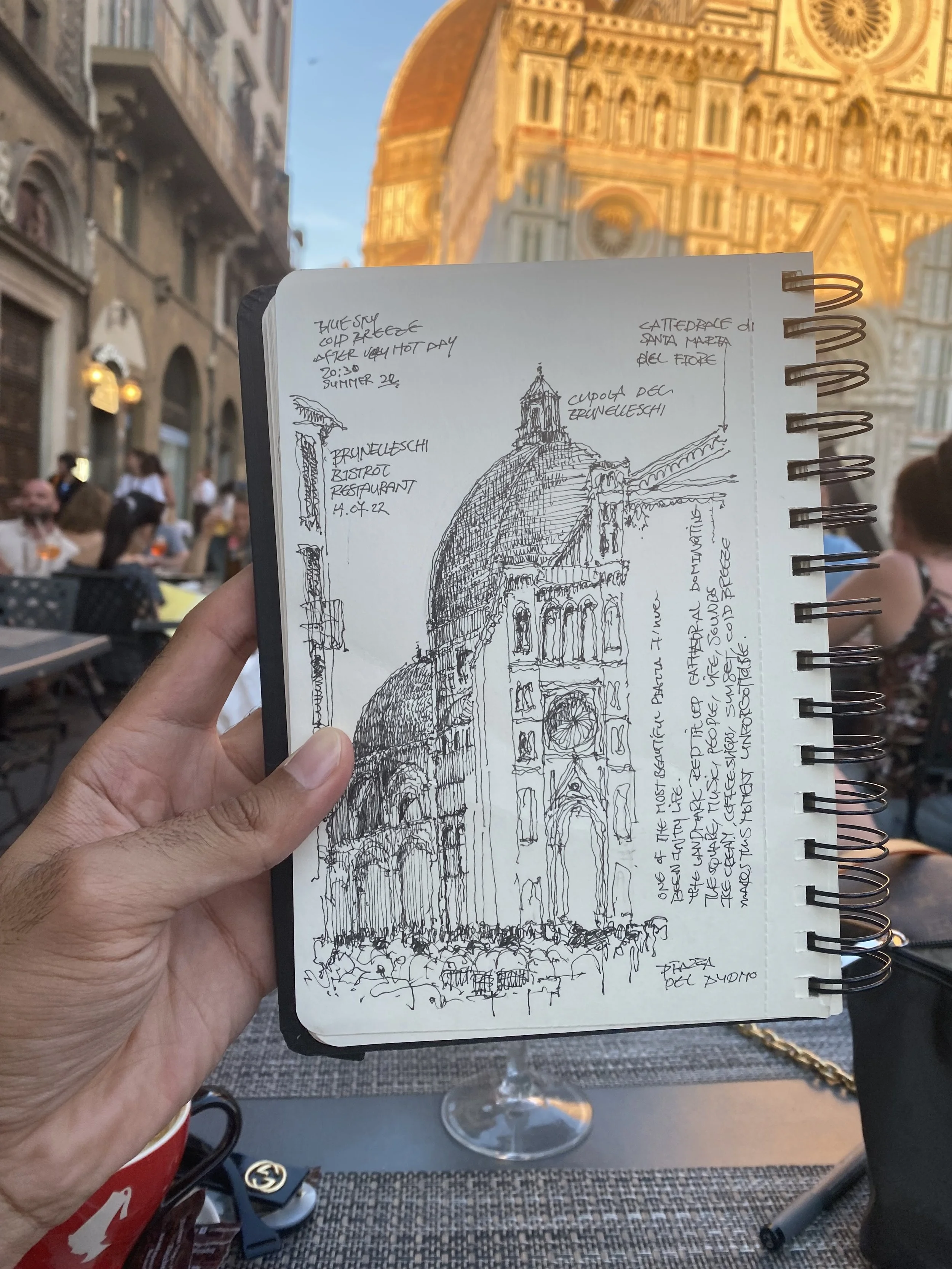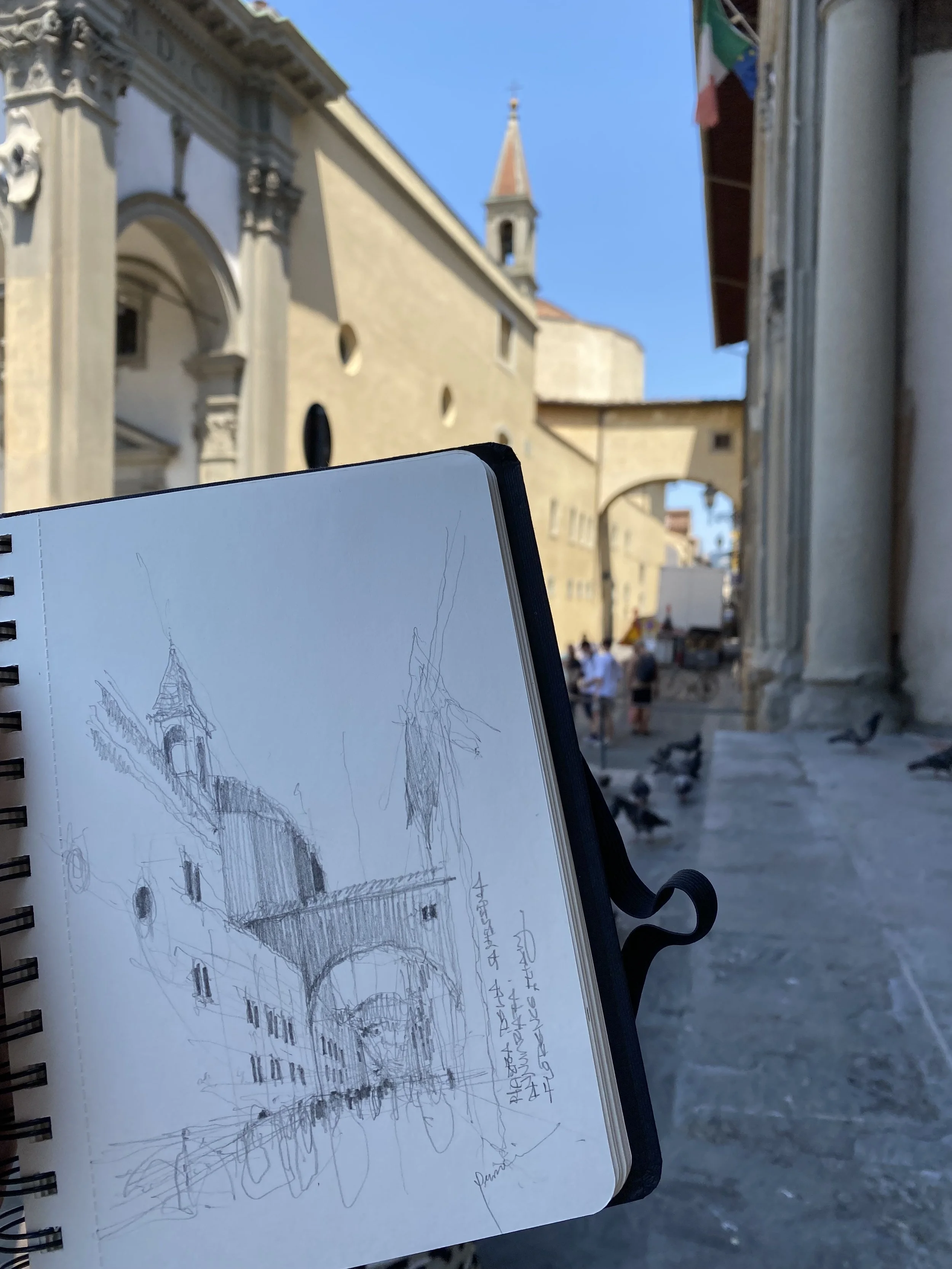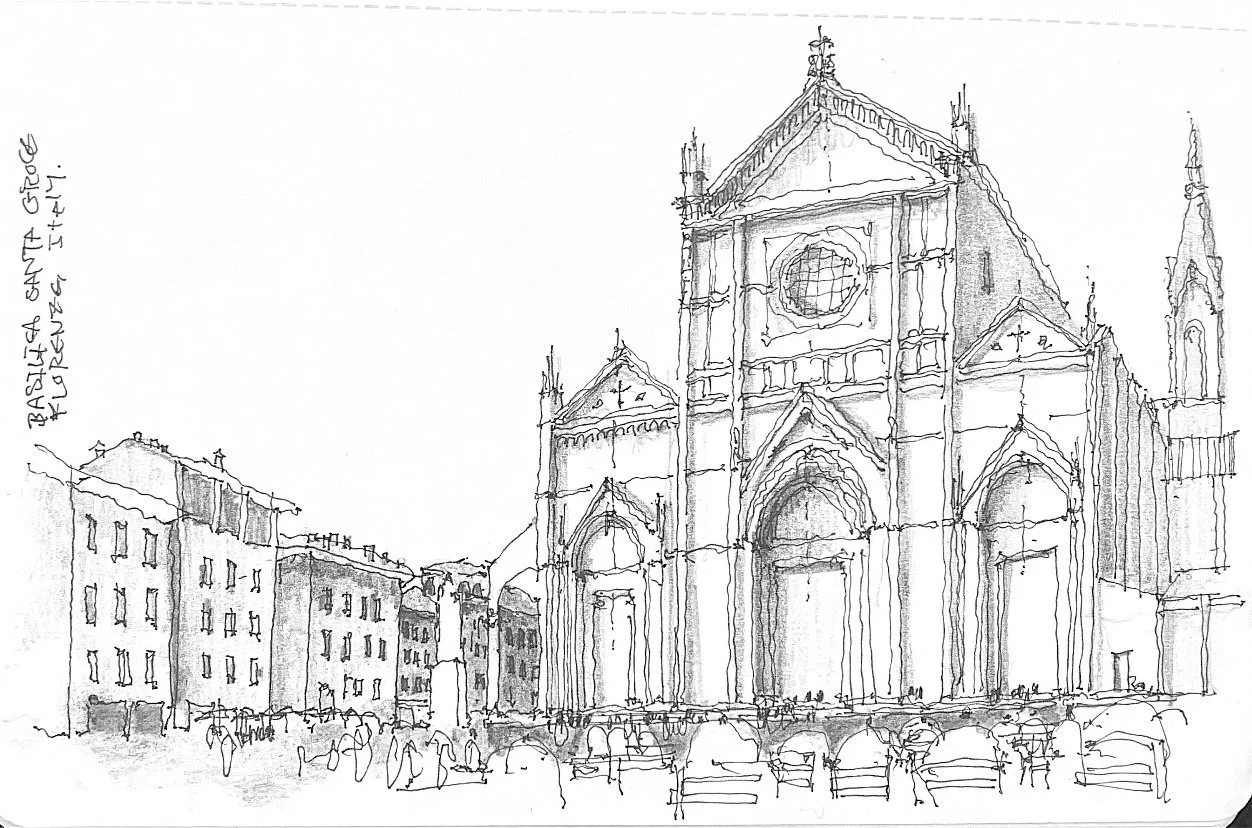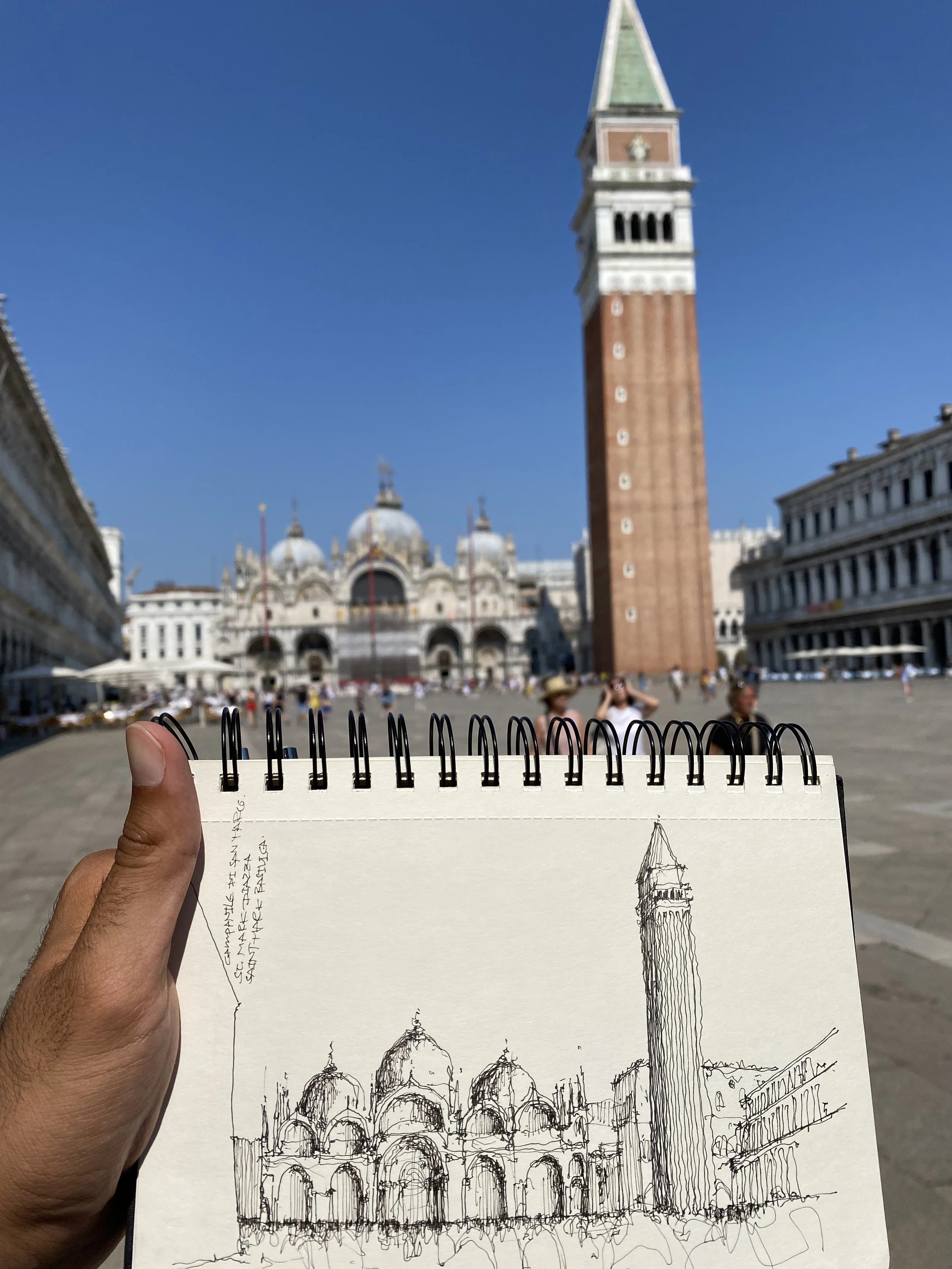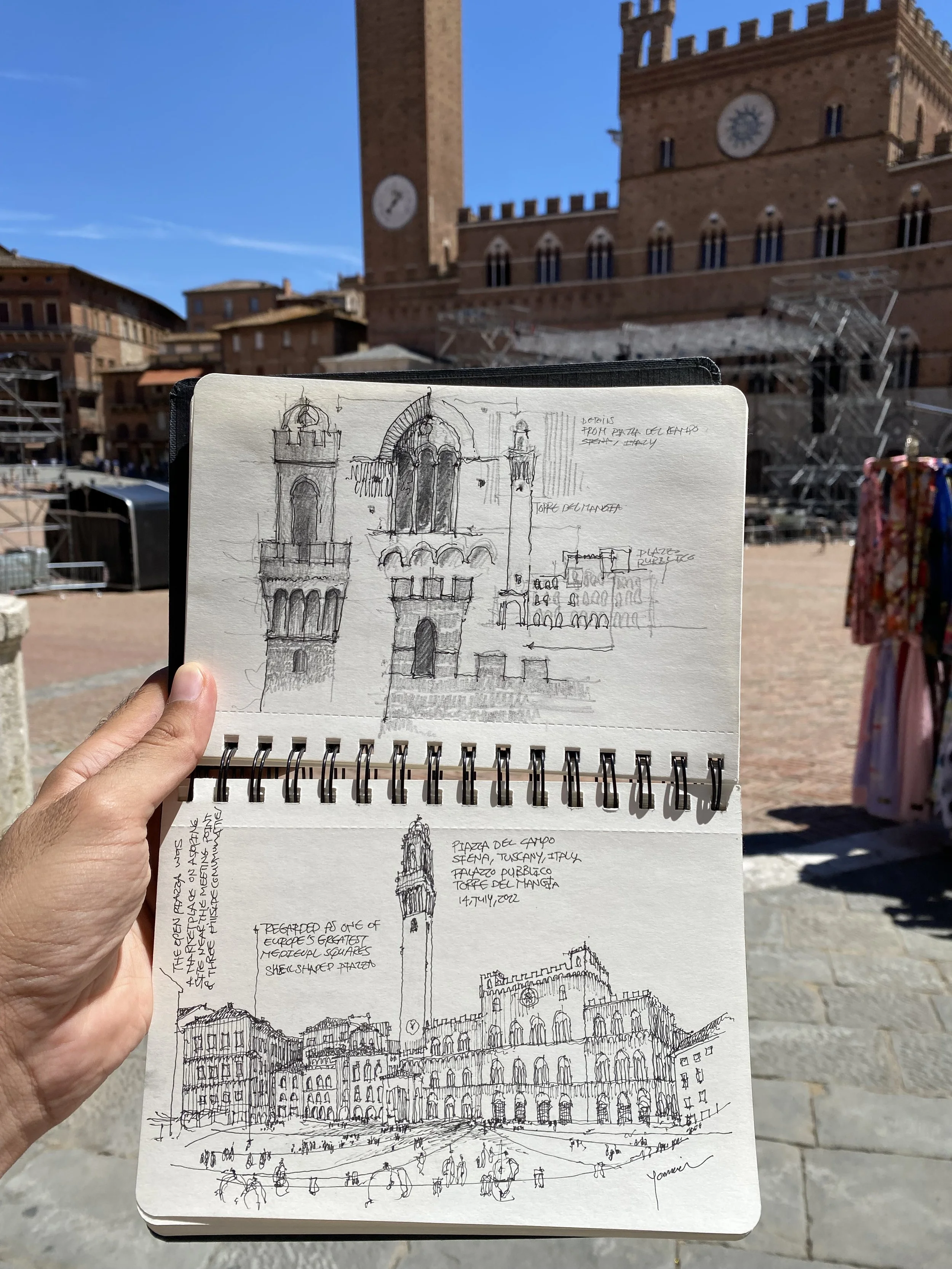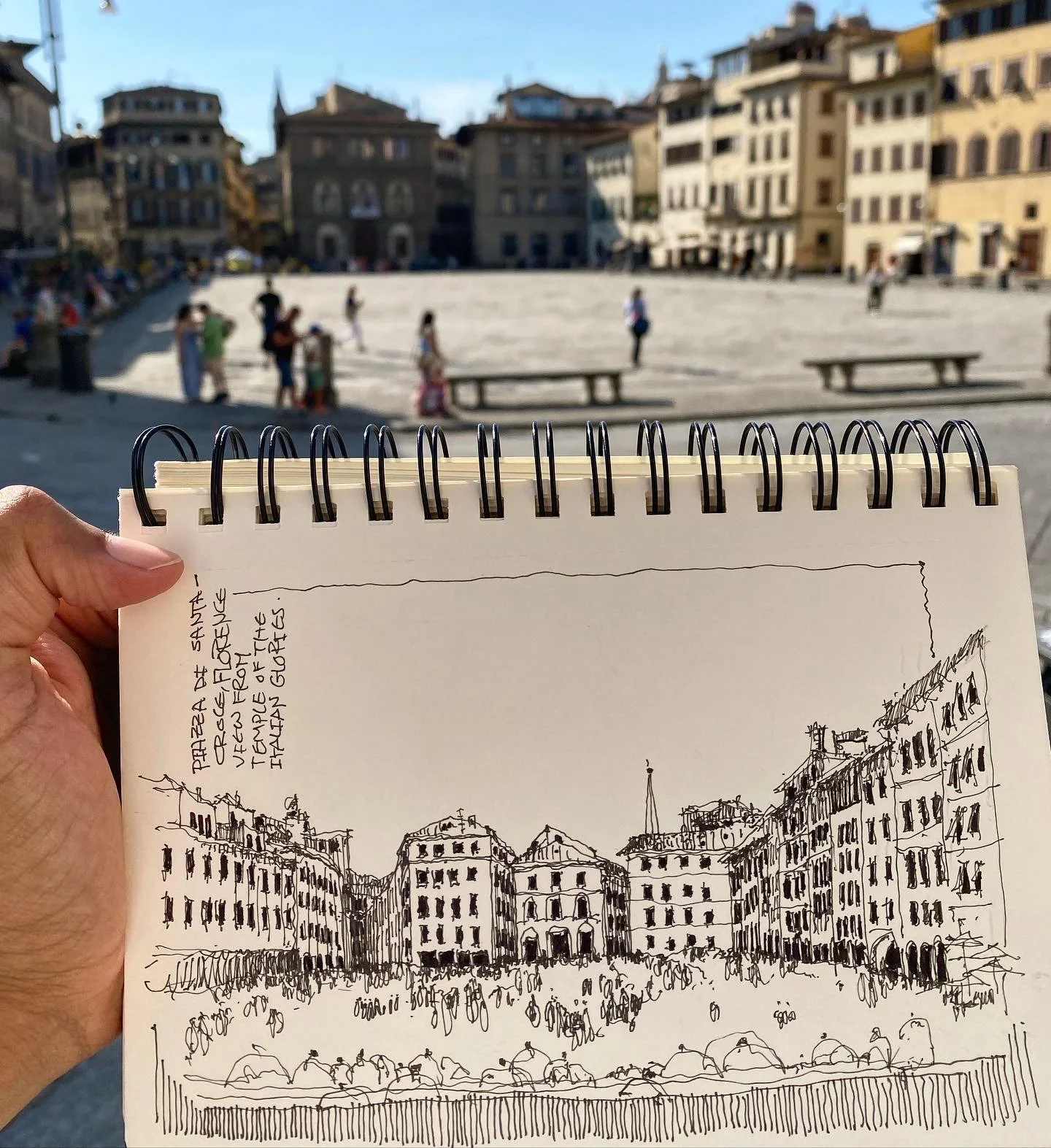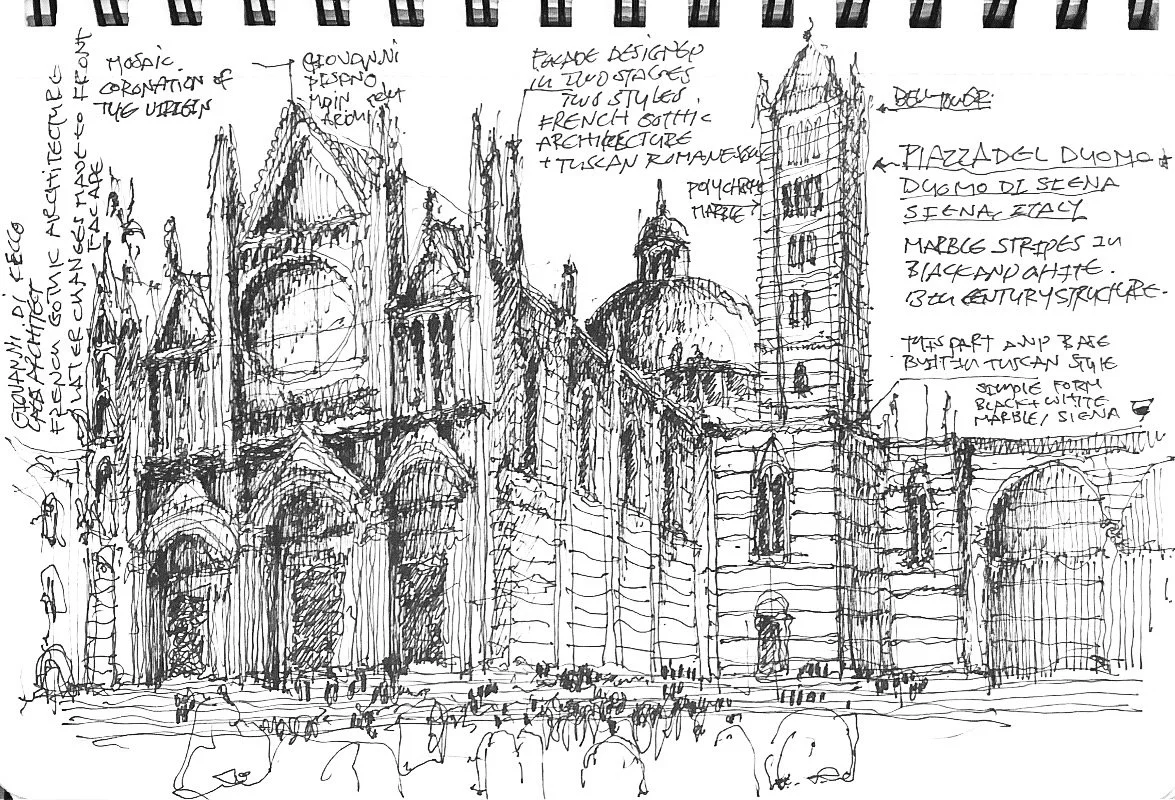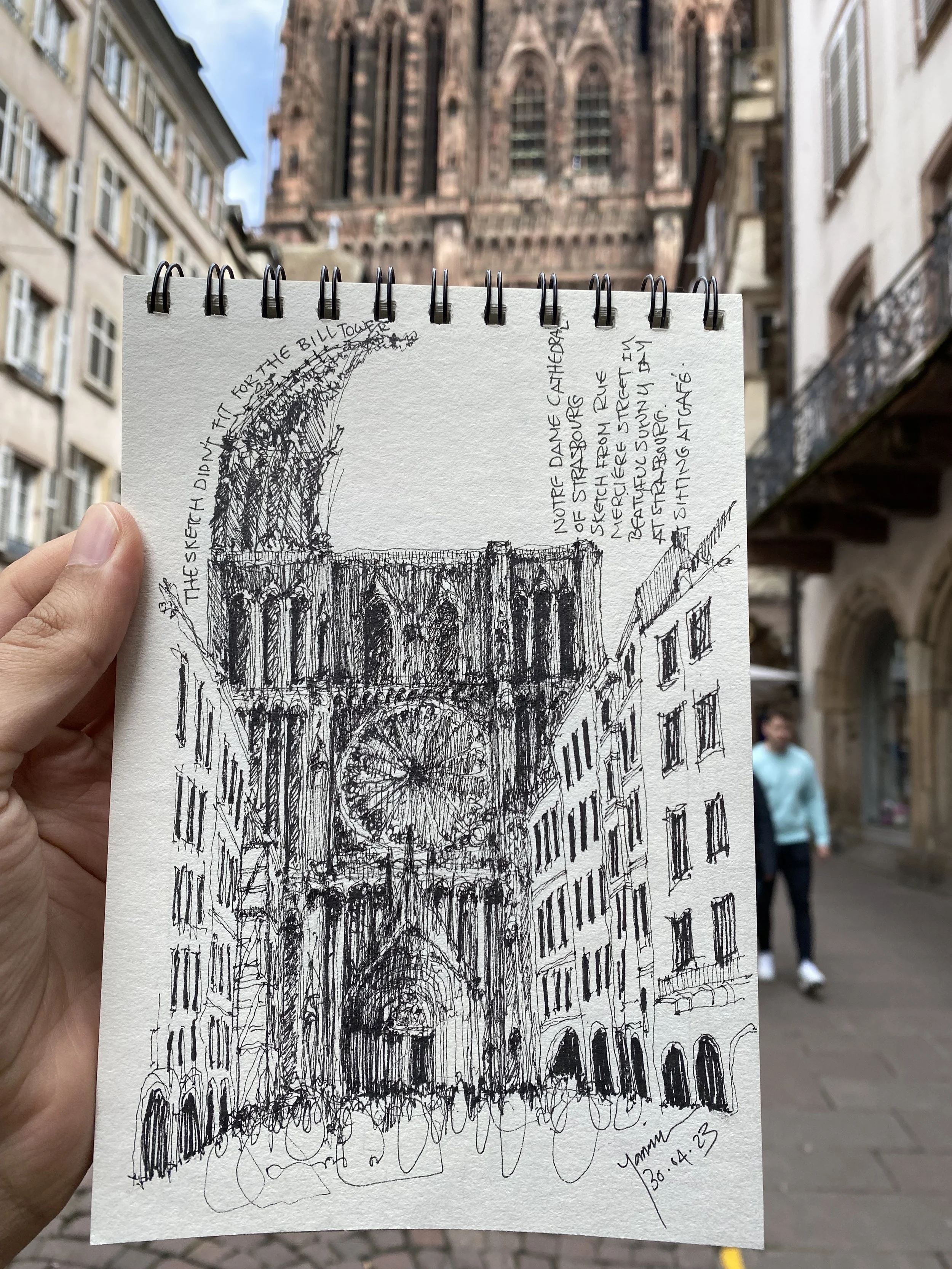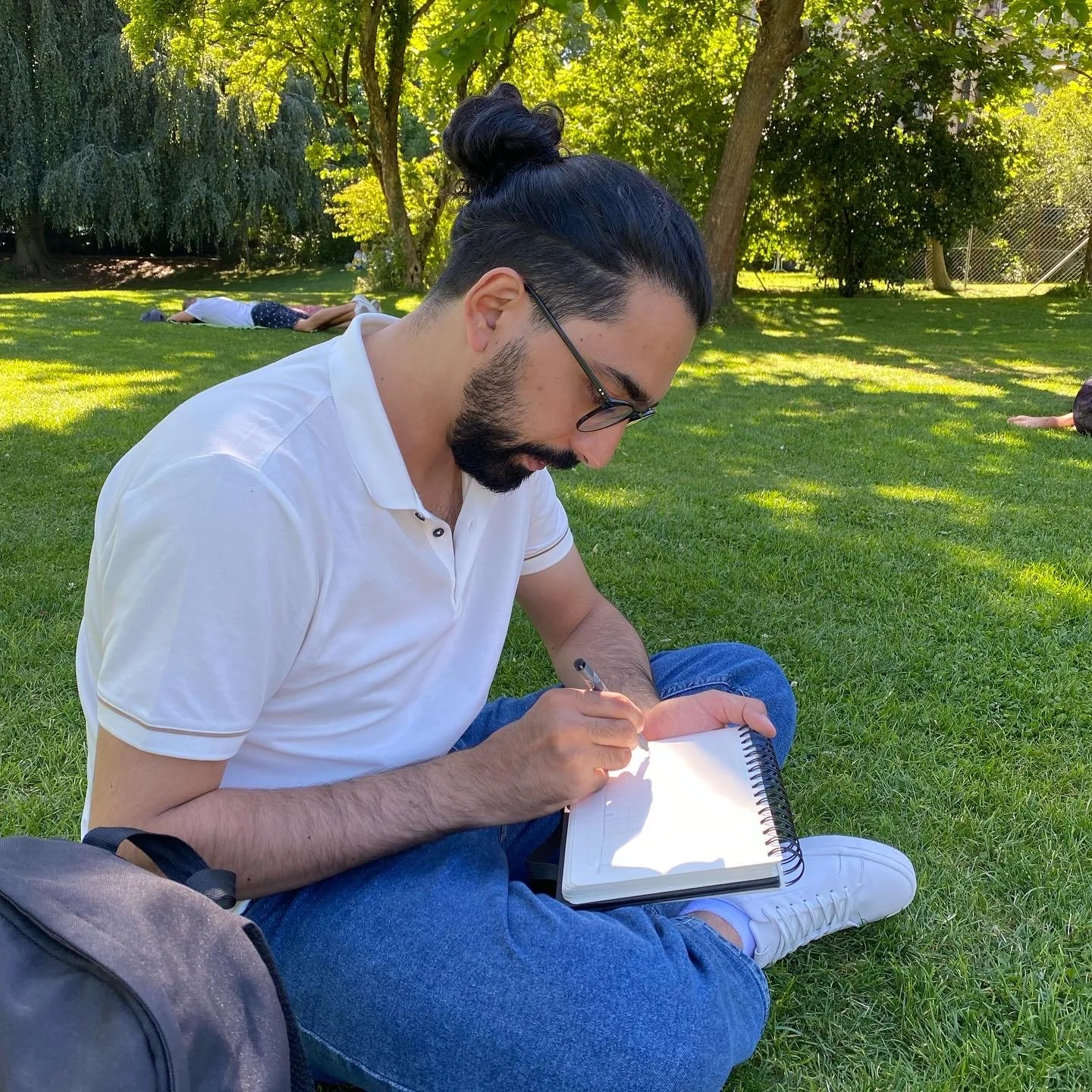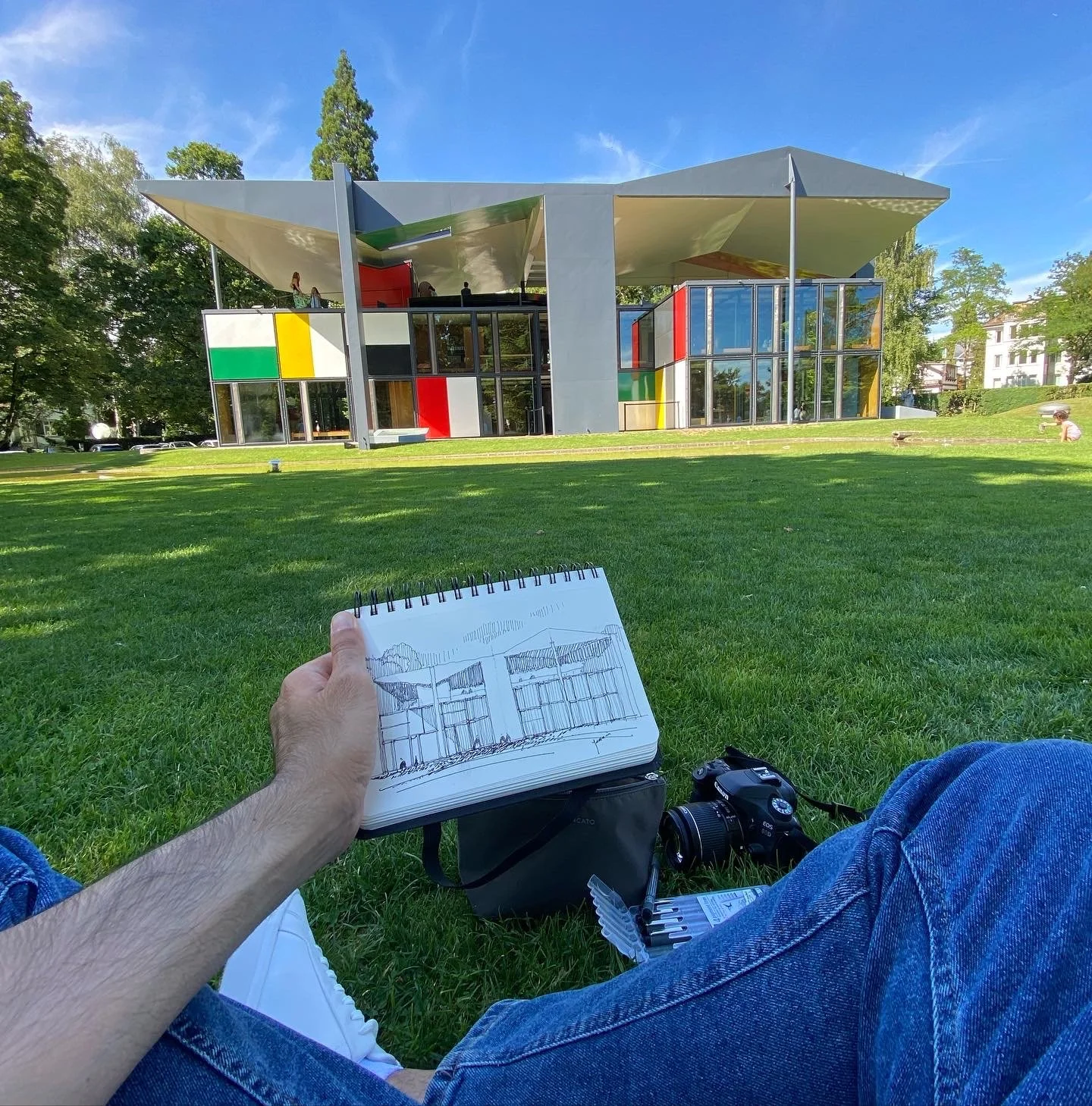From Lines to Insights: Exploring The Benefits of Urban Sketching
Urban Sketch in Salzburg, Austria.
Urban sketching
Urban sketching is the practice of capturing and documenting the world around oneself. It encompasses not only the drawing of interesting places but also everyday activities like sketching while having your morning coffee. It should include the story behind it or one's thoughts about it. Urban sketching artists can use any media or tools that suit their style and preference. It is also a practice embraced by professional artists who make a living out of urban sketching, such as Lapin or Gérard Michel.
Urban Sketch in Salzburg, Austria.
In this blog post, I will explore the personal benefits of urban sketching as an architect and its impact on my career development in architecture. Additionally, I will discuss how urban sketching has enhanced my understanding of the built environment.
Deep focus
What I used to do while traveling or visiting new places was like everyone else: take out a phone, snap a photo of a place, and move on. I rarely revisited those photos unless I captured them with my camera. However, relying on phone pictures didn't hold the same level of memory for me, especially during hectic and overwhelming travel moments. Recently, during a trip to Italy, I made a conscious decision to rely less on my camera and instead focus more on sketching. Through this experiment, I experienced an immediate shift in focus, fully immersing myself in a single task at hand.
As I dive into sketching, I enter a state of profound concentration and contemplation. With a keen eye, I observe the environment and translate it onto paper, entering a state of deep work. This focused state becomes a meditative experience, offering an opportunity to pause, reflect, and forge a more intimate connection with my surroundings. It also enables me to capture my thoughts and feelings at the moment, creating a visual and written record of my experiences.
“Photography is an immediate reaction, drawing is a meditation.”
Urban Sketch in Florence, Italy.
Understanding Form, texture, and light
Sketching in urban settings is an exercise in which I capture the reality that surrounds me. Beyond the visual representation of buildings, streets, and textures, urban sketching holds a deeper significance. The challenge here is acquiring the skills to capture the essence of the place. Through this process, I have come to understand the relationship between my observing mind, eyes, and hand. Each small sketch becomes an opportunity to refine and strengthen these connections.
By consistently engaging in urban sketching, I could learn to analyze and interpret the built environment, understanding the details of spatial relationships, materials, and the interplay of light and shadow. Eventually, I became convinced that urban sketching has allowed me to approach projects and architectural design problems with a more informed and creative mindset.
Urban Sketch in Venice, Italy.
Finding my own style
I love using pencils in general, but ink pens are also great. I like to switch between the two without much thought. Pencils add an artistic touch to the subject or the setting, and I usually use them when I want to relax. On the other hand, ink allows me to capture the outlines of a building or distinctive features of a place, as it has defining edge qualities.
Urban Sketch using pencils, Florence, Italy.
Urban sketching provides me with a sense of freedom. It allows me to draw any subjects I desire, in my own unique style, using the tools that resonate with me. This creative freedom is incredibly valuable, especially since it's not always present in my daily work. It gives me the opportunity to experiment, discover, and refine my own visual language.
Urban Sketch using Fineliners, Florence, Italy.
This process of self-expression through sketching is a powerful form of training. As I engage in urban sketching, I gradually discover my own unique way of interpreting the world and authentically capturing it.
Urban Sketch of basilica of santa croce, Florence, Italy.
Enhancing my observation skills
This point resonates with me the most, as in the fast-paced world of today’s architecture, with AI and flashy designs and visualizations all around, it can be challenging to truly make sense of all of this. However, urban sketching allows me to ground myself and observe life, and how people create life within spaces. For instance, while sketching a vibrant urban piazza in Italy, I am able to slow down, immerse myself in the place, and keenly observe human behavior, movement patterns, and spatial relationships. This often leads me to ask questions about why a building developed a certain way or why people prefer one piazza over another, prompting further research for answers.
Sketch at St. Mark's Square, Venice, Italy.
Our work as architects is deeply intertwined with the dynamics of life within and around buildings. I believe one can gain insights into how people navigate spaces, utilize public areas, and interact with architectural elements. These observations provide valuable knowledge that can inform the design process, ensuring that the architectural solutions created truly meet the needs of the users and enhance the overall urban experience. By incorporating urban sketching into my daily routine, I can definitely enhance my observation skills and enrich my experience of architecture.
urban Sketch at Piazza Del Campo Siena, Italy.
Exploring the Complex systems
What interests me the most is observing the complexity of life happening on the streets and how people interact with spaces and buildings. It goes beyond reading about spatial qualities in books; it is a firsthand experience that cannot be fully conveyed through words alone.
Urban Sketch of Piazza del Santa Croce, Florence, Italy.
In my opinion, capturing moments in space and time, and attempting to convey the features of complex systems, is one of the most exciting things I could do in life. However, it is also very challenging and requires a tremendous amount of knowledge and high observation skills. In today's world, I am mostly engaged with computer work and spend much time behind the screen. So I strongly believe that by embracing urban sketching as a tool for understanding life, I could understand the interplay between buildings and people, and develop a profound understanding of how spaces can be designed to facilitate meaningful interactions.
Urban Sketch at Duomo di Siena, Italy.
Lasting memories
The beauty of urban sketching lies in its ability to help me create a lasting impression of a place. When I revisit my sketches, they serve as windows to the exact moment i have did the sketch, triggering a flood of memories, allowing me to recall the intricate details of the scene and, reviving the emotions and experiences associated with it.
Urban Sketch at Strasbourg, France.
In a world dominated by instant gratification and fleeting digital images, urban sketching offers a profound alternative—a way to truly absorb the essence of a place, engage with the surroundings, and create lasting memories through sketches.
Urban Sketch at Old city Prague, Czech.
“In spite of everything I shall rise again: I will take up my pencil, which I have forsaken in my great discouragement, and I will go on with my drawing.”
conclusion
while I, like many of you, spend hours working in front of Screens, I have found a way to reconnect with the essence of architecture that initially drew me to this field. This blog post serves as a reminder to everyone to step outside, sketch life, and engage in something more inherently human. Urban sketching offers a unique opportunity to appreciate the beauty and intricacies of the built environment firsthand. It allows us to step away from virtual meetings and immerse ourselves in the tangible world around us.
Through urban sketching, we can find joy and fulfillment in the act of observing, interpreting, and capturing the essence of architecture. It reminds us of the importance of connecting with our surroundings, appreciating the interplay of light, form, and space, and understanding how people interact with the built environment. So, I encourage you all to take a break from the digital realm, grab a sketchbook and pen, and venture outside. Sketch the urban landscape, the streets, the buildings, and the people. Allow yourself to slow down, appreciate the details, and engage in a more tactile and human experience of architecture.
Zurich, Switzerland
we can reignite our passion for the field, foster a deeper appreciation for the built environment, and create meaningful memories that go beyond pixels on a screen. Let us remember to celebrate the beauty of architecture, not only in our virtual endeavors but also in the vibrant, tangible world that surrounds us.



